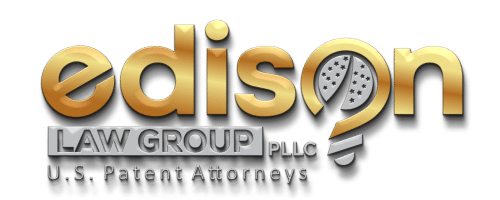Uncover the World of Intellectual Property
What is a USPTO patent search?
A USPTO patent searches is a search conducted on the United States Patent and Trademark Office (USPTO) website to find information about patents that have been granted or applied for in the United States. The USPTO is the federal agency responsible for granting patents to inventors and businesses for their inventions and innovations.
A USPTO patent search allows individuals, inventors, and businesses to:
- Research prior art: It helps inventors and innovators determine if their invention is novel and non-obvious by searching for similar patents or published applications. This is important because patents are only granted for inventions that meet these criteria.
- Avoid infringement: By searching for existing patents, individuals and companies can identify patents that are relevant to their area of interest or technology and avoid unintentional infringement.
- Assess the patent landscape: Researchers, businesses, and investors use USPTO patent searches to understand the existing patents in a particular field, identify potential opportunities for innovation, or evaluate the competition.
The USPTO provides online search tools and databases where you can search for patents and patent applications. Some common search tools and databases provided by the USPTO include:
- USPTO Patent Search: This tool allows you to search for patents and patent applications using keywords, patent numbers, inventors’ names, and other criteria.
- Patent Full-Text and Image Database (PatFT): PatFT provides full-text searching of granted patents from 1976 to the present.
- Public PAIR (Patent Application Information Retrieval): Public PAIR allows you to access the file history of patent applications, which includes all the documents and correspondence between the patent examiner and the applicant.
- Google Patents: While not an official USPTO resource, Google Patents is a search engine specifically designed for patents. It can also be a useful tool for conducting patent searches.
Performing a USPTO patent search is an important step in the patent application process and for anyone involved in the field of intellectual property. It helps you gather information about existing patents and make informed decisions about pursuing your own patent application or conducting research in a specific technology area.
Are patents public record?
Yes, patents are public records. When inventors or companies are granted a patent by a government authority, such as the United States Patent and Trademark Office (USPTO), the details of the patent, including its title, abstract, drawings, claims, and other relevant information, become part of the public domain. This is done to promote transparency, innovation, and knowledge sharing.
The public availability of patent information serves several purposes. It allows others to search and access this information for research, development, and business purposes. It also helps prevent the granting of duplicate or overly similar patents, as prior art is disclosed and can be examined by patent examiners during the patent application process. While patent documents are public records, the underlying technical or business information may not be publicly disclosed unless the patent holder chooses to share it voluntarily.
How do I search patents?
Searching for patents can be done through various methods and resources. Here are steps on how to search for patents:
- Use Online Databases: Visit the official website of the patent office in your country, such as the United States Patent and Trademark Office (USPTO) or the European Patent Office (EPO).
- Online Patent Databases: Utilize online patent databases like Google Patents, the European Patent Office’s Espacenet, or the World Intellectual Property Organization’s (WIPO) Patentscope.
- Keyword Search: Start with a keyword search related to the technology or subject matter of interest. Use Boolean operators (AND, OR, NOT) to refine your search.
- Advanced Search: Explore advanced search options to narrow down results based on criteria like inventor’s name, patent number, publication date, or classification.
- Analyze Patents: Review the search results and click on patents of interest to access detailed information, including abstracts, claims, and drawings.
- Citation Analysis: Examine the patent’s citation list to find related patents or documents.
- Patent Classification: Use patent classification codes (e.g., USPTO’s CPC or IPC) to find patents in specific technology areas.
- Legal Status: Check the legal status of a patent to see if it’s still in force or has expired.
- Consider Professional Help: If your search is complex or you’re seeking in-depth analysis, consider consulting a patent attorney or patent search firm.
Remember that patent searching can be intricate, and understanding the patent system’s nuances can be helpful. Whether you’re conducting research, assessing the competition, or considering a patent application, a comprehensive patent search is a valuable step in the process.
Should I pay for a patent search?
Paying for a patent search can be worthwhile for serious inventors or businesses. Professional searches provide thorough results and help assess patentability and potential infringement. However, for basic searches, free online tools can be sufficient. Consider your needs and budget when deciding.
Can you do a free patent search?
Yes, you can conduct a free patent search using online resources provided by patent offices like the United States Patent and Trademark Office (USPTO) or international databases like Google Patents and Espacenet. These tools allow you to search for patents and related documents by keywords, inventors, patent numbers, and more.
However, keep in mind that while free patent searches are a good starting point, they have limitations. Professional patent search firms or patent attorneys offer paid services that provide more comprehensive and thorough results. Here are some considerations:
- Complexity of the Search: If your invention is highly specialized or if you need a detailed analysis of patent landscapes, a professional search may be more effective.
- Legal Expertise: Patent professionals can interpret and assess the relevance of found patents, which is essential for making informed decisions regarding patentability and potential infringement.
- Time and Resources: Professional searches can save you time and effort, as patent professionals are experienced in navigating patent databases and understanding the intricacies of patent law.
In summary, free patent searches are a valuable starting point for initial research, but for critical patent-related decisions or complex inventions, it may be beneficial to invest in a professional patent search to ensure a more thorough and reliable analysis of existing patents.
How do I search patents in the USPTO?
To search patents on the USPTO website:
- Visit the USPTO website.
- Click “Search” and select “Patents.”
- Use the “Quick Search” for basic keyword queries or the “Advanced Search” for more refined searches.
- Enter relevant keywords, inventors, or patent numbers.
- Refine your search with filters like publication date or patent type.
- Review search results and click on patents for detailed information.
How to do a Google patent search?
To do a Google patent search, follow these steps:
- Open your web browser and go to Google Patents (https://patents.google.com).
- In the search bar, enter keywords, inventors, patent numbers, or any other relevant search terms related to the technology or subject you’re interested in.
- Click the “Search” button or press Enter.
- Browse through the search results to find patents related to your query. The results will display patent titles, inventors, publication dates, and other relevant information.
- Click on a specific patent to view its detailed information, including the patent’s abstract, claims, drawings, and related patents.
- To narrow down your search, you can use the “Advanced Search” option to filter results by various criteria, such as publication date, patent type, or inventor name.
Google Patents provides a user-friendly interface and a powerful search engine for patent information, making it a valuable tool for patent research and analysis.



